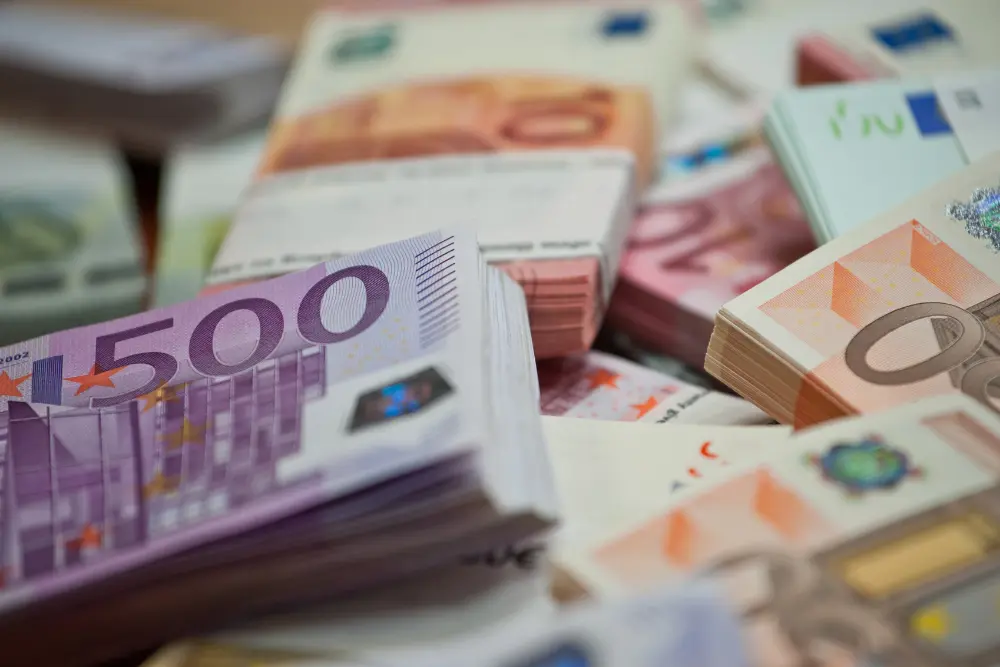While investing, knowing how the European Central Bank influences markets is crucial. Like the American Federal Reserve System, its decisions and actions can have far-reaching consequences for global markets. In this entry, you will learn the ECB’s role. You will also learn the functions to help you make better-informed investment decisions.
Table of contents:
The European Central Bank: History and Key Facts
- The European Central Bank is the central bank of the nineteen EU countries. It only includes the countries that have adopted the Euro as their currency. The ECB is entrusted with managing the euro and maintaining price stability within the eurozone.
- The ECB was established on June 1, 1998, as part of the European Union’s move towards a deeper economic and monetary union. The idea of a central bank for Europe dates back to the 1950s. However, it was not until the signing of the Maastricht Treaty in 1992 that the Institition was set in motion.
- The ECB is based in Frankfurt. Its chief decision-making body is the Governing Council, composed of six members of the Executive Board and the governors of the national central banks of the 19 EU countries that have adopted the euro.
- It is an independent body in its decision-making, and its decisions are not subject to the approval of EU governments or the European Parliament.
- After the European Parliament’s approval, the ECB President is appointed by the European Council for eight years. As of 2019, the President of the European Central Bank is Christine Lagarde.

European Central Bank: Functions
The European Central Bank is a focal player in the European Economy, particularly the Eurozone. That’s why knowing how the European Central Bank influences markets is important. Below are some of the most important tasks the ECB is entrusted with.
The ECB Sets Monetary Policy
The European Central Bank establishes and executes monetary policy in the Eurozone to maintain price stability and preserve the euro’s purchasing power. It does this by adjusting interest rates and employing open market operations to influence the economy’s money supply and credit. Additionally, it provides guidelines for future monetary policy decisions.
The ECB Supervises Banks Within the Eurozone & Ensures Financial Stability
Another task the European Central Bank is entrusted with is overseeing the Eurozone’s largest and most complex financial institutions. The goal is to ensure the stability and resilience of the system. To achieve that sort of stability, the Institition conducts stress tests, sets supervisory standards, and takes enforcement action if necessary.
Frankfurt-located Institition also holds an important role in ensuring financial stability in the eurozone by monitoring and assessing risks to the financial system and taking appropriate action to address them.
The ECB Integrates the Eurozone Banking Union
The European Central Bank (https://www.ecb.europa.eu/ecb/html/index.en.html) plays a major role in establishing an effective banking union within the eurozone, which aims to improve the financial system by making it more integrated and resilient to market fluctuations.
These include the Single Supervisory Mechanism, responsible for overseeing the Eurozone’s largest and most complex banks, and the Single Resolution Mechanism, responsible for the timely and efficient resolution of failing banks.
The ECB Provides Invaluable Research Data
European Central Bank provides invaluable data on the state of the Eurozone’s economy by conducting wide-scale economic research and analysis in support of its monetary policy decisions.
The Institution works closely with national central banks in the eurozone, as well as with the European Commission and the European Parliament, to carry out its tasks and promote the stability and prosperity of the eurozone. Investors, policymakers, and the general public keep a close eye on its decisions and actions, which can have big effects on the economy and financial markets of the eurozone.

Who Funds the European Central Bank?
No particular government or entity finances the European Central Bank. The ECB is self-funding and generates its own income through its monetary policy operations, such as printing money and managing its balance sheet. The Institition also charges interest on its assets, such as government bonds, and interest on its loans to other commercial banks. The Institution then uses the revenue to:
- cover the institution’s operating expenses (salaries and other costs),
- to further develop its monetary policy objectives.
Importantly, the ECB is independent in its policy-making and operates independently of any of the EU governments or the European Parliament. This independence helps the Institition pursue its monetary policy objectives without political influence.
CB’s Moves and Decisions: What To Look For?
As the Eurozone’s central bank, the European Central Bank plays a key role in shaping the economic and financial landscape of the region. When analyzing the Institition‘s moves and decisions, investors should consider the following:
- Monetary policy: as an investor, you should strive to keep a close eye on the ECB’s monetary policy decisions, especially changes in interest rates, the size and composition of its balance sheet, and any indications of future actions.
- Economic outlook: The ECB issues regular updates on its outlook for the Eurozone economy, including growth projections and inflation and employment forecasts. This outlook is particularly important for investors. It provides valuable insights into the Instititions views on the economy’s future direction. It also shows the course of its monetary policy.
- Market reactions: Considering how the market reacts to the Institition’s decisions and statements are important. For instance, if the ECB makes interest rate changes or other monetary policy decisions, it may lead to movements in financial markets, including stocks, bonds, currencies, cryptocurrencies, and commodities.
- Communication: The Institition has been increasingly focused on improving its communication with the financial markets and the wider public. As an investor, you might want to pay attention to the ECB‘s public statements and press conferences. They can provide important information about the bank‘s decision–making process.
Overall, it’s up to you what you choose to pay attention to. As complicated as it may seem, it often comes down to following the right Twitter accounts and Discord or Telegram channels.
European Central Banks Exchange Rates
The European Central Bank (ECB) does not directly set exchange rates between the euro and other currencies. Nevertheless, its monetary policy decisions and operations can indirectly impact exchange rates.
For example, changes in interest rates and other monetary policy measures can affect the demand for the euro relative to other currencies, which can impact the exchange rate. The Institition‘s role in promoting financial stability and maintaining the eurozone’s stability can also indirectly impact exchange rates.
It is important to note that many factors determine exchange rates. These include macroeconomic conditions, interest rate differentials, government policy, and investor sentiment. Remember that Other factors can outweigh the ECB’s limited influence over exchange rates, too.
Investors can monitor exchange rates and the ECB‘s monetary policy decisions. This will help them gain insights into the state of the eurozone economy and the potential impact on currency markets.
How Can Investors Profit From ECB Divergence?
The concept of divergence is best understood as differences in monetary policies between the European Central Bank and other central banks, such as the Federal Reserve. Such differences can result in opportunities that investors can benefit from:
- Currency trading: The ECB’s divergence can create opportunities for traders looking to profit from changes in exchange rates. For example, if the Institition raises its interest rates while other central banks keep their rates the same, the Euro may appreciate against other currencies. This would create profit opportunities for traders.
- Interest rate differentials: Divergent interest rate decisions can create opportunities for investors to benefit from the yield differential between various bonds and other fixed-income instruments. For example, suppose the European Central Bank raises interest rates, and other central banks keep their rates unchanged. In that case, investors may benefit from higher yields on euro-denominated bonds than bonds issued in other currencies.
- Equity investments: The ECB’s divergence can also affect the equity markets. Changes in interest rates, economic conditions, and investor sentiment can all impact the value of stocks and other equity investments. Many investors look to benefit by investing in companies. These companies are well prepared to benefit from changing economic conditions and monetary policy.
Understanding the relationship between ECB divergence and financial market conditions is important. It can be complex and influenced by various factors. Some of them are macroeconomic conditions, government policy, and investor sentiment. Investors should carefully consider economical factors before making investment decisions. These are, for example, risk tolerance and investment goals.
How the European Central Bank Influences Markets: Summary
The European Central Bank is a powerful financial institution influencing the European and world economies. Its decisions have a wide-ranging impact on almost every major market, so it’s best to be up-to-date with its policies.
That said, the ECB is just one piece of the puzzle. Before you start investing real money, make sure to learn more by checking out the SimpleFX Training Academy.

